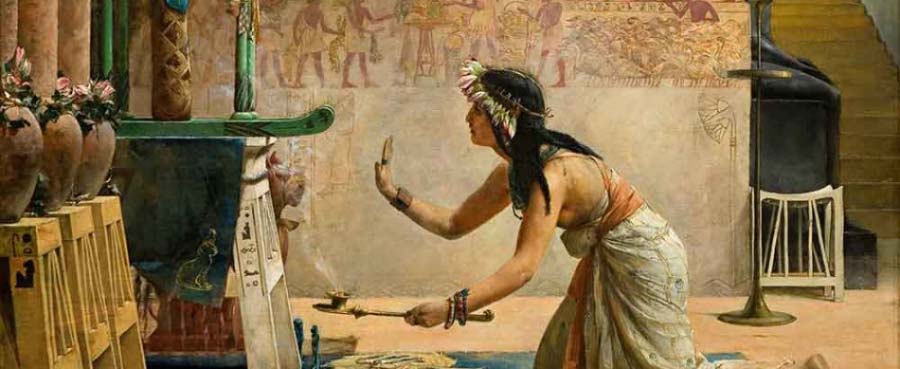Perfumery 1001 - Introduction
“Perfume is the art that makes memory speak.”
– Francis Kurkdjian
In this blog, we embark on an olfactory journey that explores the rich history and enchanting fragrance families. Discover the ancient origins of perfumery in civilisations past, and trace its evolution through the ages. Learn what truly makes up a perfume, from its essential ingredients to the various concentrations that define its strength and longevity.
Definition
Perfume (French: Parfum) is a mixture of fragrant essential oils or aroma compounds (fragrances), fixatives and solvents, usually in liquid form. Generally, perfumes are substances that emit fragrant odour and hence are applied to give the human body, living spaces, food, and other objects agreeable and pleasant scents.
History
Perfumes consist of man-made mixtures of aromatic chemicals and essential oils. The history of perfume can be traced back to some of the earliest human civilisations according to archaeological excavations. The aroma from various raw materials formed the earliest versions of perfumes, whilst ancient societies like Ancient Egypt, Greece, Rome and China experienced growing interests in aromatic ingredients and their applications such as fermented liquors, fumigations, balms and even oils.

Modern perfumery began in the late 19th century with the commercial synthesis of aroma compounds such as vanillin or coumarin, which allowed for the composition of perfumes with smells previously unattainable solely from natural aromatics. Some of the oldest commercially produced perfumes are still available for purchase today, for example, Penhaligons' Blenheim Bouquet for Men (launched in 1902) and Guerlain's Mitsouko (launched in 1919).
Fragrance Families
Perfume ingredients include a blend of alcohol, oils, and other aromatic components. Each fragrance has a distinct smell based on how it was made and the various perfume ingredients used in it. Some ingredients in perfume may sound familiar while others appear completely foreign.
Michael Edwards, "The perfume expert's expert", whose work remains a universally embraced source of fragrance classification and an essential selling tool for fragrance houses and retailers.
Concentrations
Perfume types reflect the concentration of aromatic compounds in a solvent, which in fine fragrance is typically ethanol or a mix of water and ethanol. Various sources differ considerably in the definitions of perfume types. The intensity and longevity of a fragrance is based on the concentration, intensity, and longevity of the aromatic compounds, or perfume oils, used. As the percentage of aromatic compounds increases, so does the intensity and longevity of the scent.
The most widespread terms used to describe a fragrance's approximate concentration by the percentage of perfume oil in the volume of the final perfume product are:
- Parfum or extrait (P): 15–40% aromatic compounds; Also known as '(pure) perfume' and 'perfume extract'.
- Esprit de parfum (ESdP): 15–30% aromatic compounds, a seldom used strength concentration between EdP and parfum.
- Eau de parfum (EdP): 10–20% aromatic compounds (typically ~15%).
- Eau de toilette (EdT): 5–15% aromatic compounds (typically ~10%). This is the staple for most masculine perfumes.
- Eau de cologne (EdC): 3–8% aromatic compounds (typically ~5%). This concentration is often simply called cologne.
Concentration levels of a perfume product can often be found after or under the name of the fragrance, and/or engraved in fine print on the bottom of the perfume bottle.
It is worth mentioning that these terminologies can be quite imprecise due to the wide range of specific concentrations of aromatic compounds that may be present in each perfume concentration level. Many will see an EdP being always more concentrated than an EdC and an EdT, however, it is not always the case as different perfume houses assign different amounts of oils to each of their perfumes and formulations.
Furthermore, some perfume products bearing the same name with different concentration levels may also use a different perfume oil mixture (in short, different compositions). According to Wikipedia, "in order to make the EdT version of a fragrance brighter and fresher than its EdP, the EdT oil may be 'tweaked' to contain slightly more top notes or fewer base notes". Examples include the popular Chanel No. 5 - its parfum, EdP, and EdT concentrations are in fact different compositions. Perfumeries these days may utilise words such as extrême, intense, or concentrée that might indicate a higher aromatic concentration, with the fragrances being actually completely different, and are related only due to a similar perfume accord or product concept.
Sources:
- How Perfume Works https://science.howstuffworks.com/perfume1.htm
- The History of Perfume - The Ages & Iconic Fragrances https://www.pairfum.com/history-of-perfume/
- Perfume [Wikipedia] https://en.wikipedia.org/wiki/Perfume
- The 3,200-year-old perfume of Tapputi, the first female chemist in history, came to life again https://arkeonews.net/the-3200-year-old-perfume-of-tapputi-the-first-female-perfumer-in-history-came-to-life-again/
- Michael Edwards' Fragrance Wheel [Image] https://www.fragrancesoftheworld.com/#
- History of Perfume Making [Image] https://arkeonews.net/the-3200-year-old-perfume-of-tapputi-the-first-female-perfumer-in-history-came-to-life-again/




















































